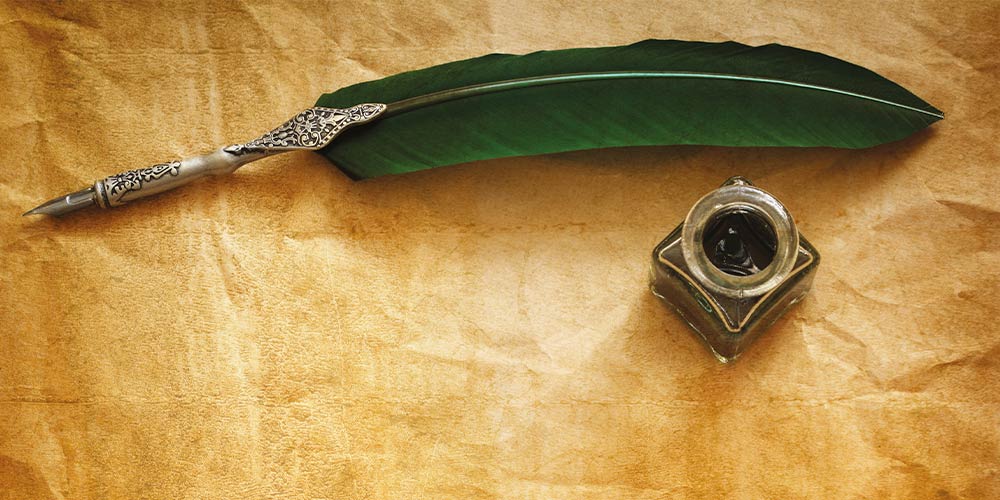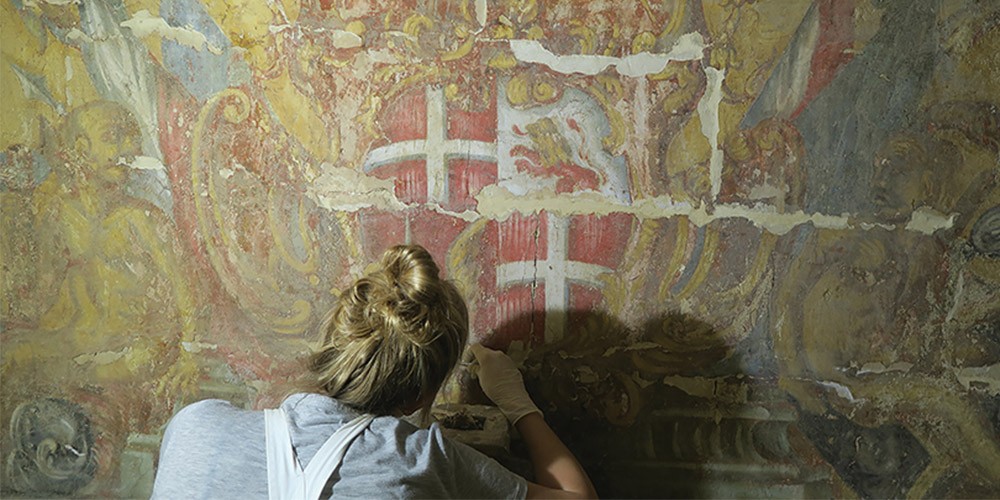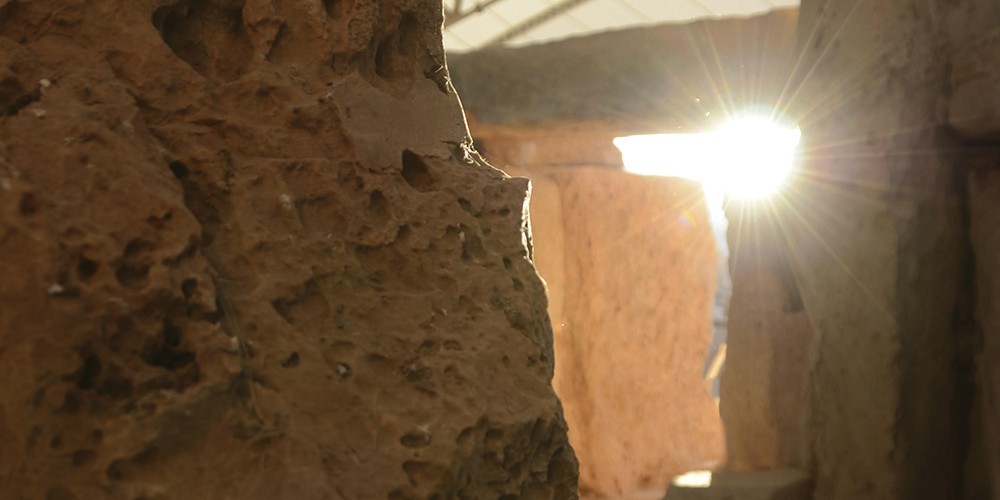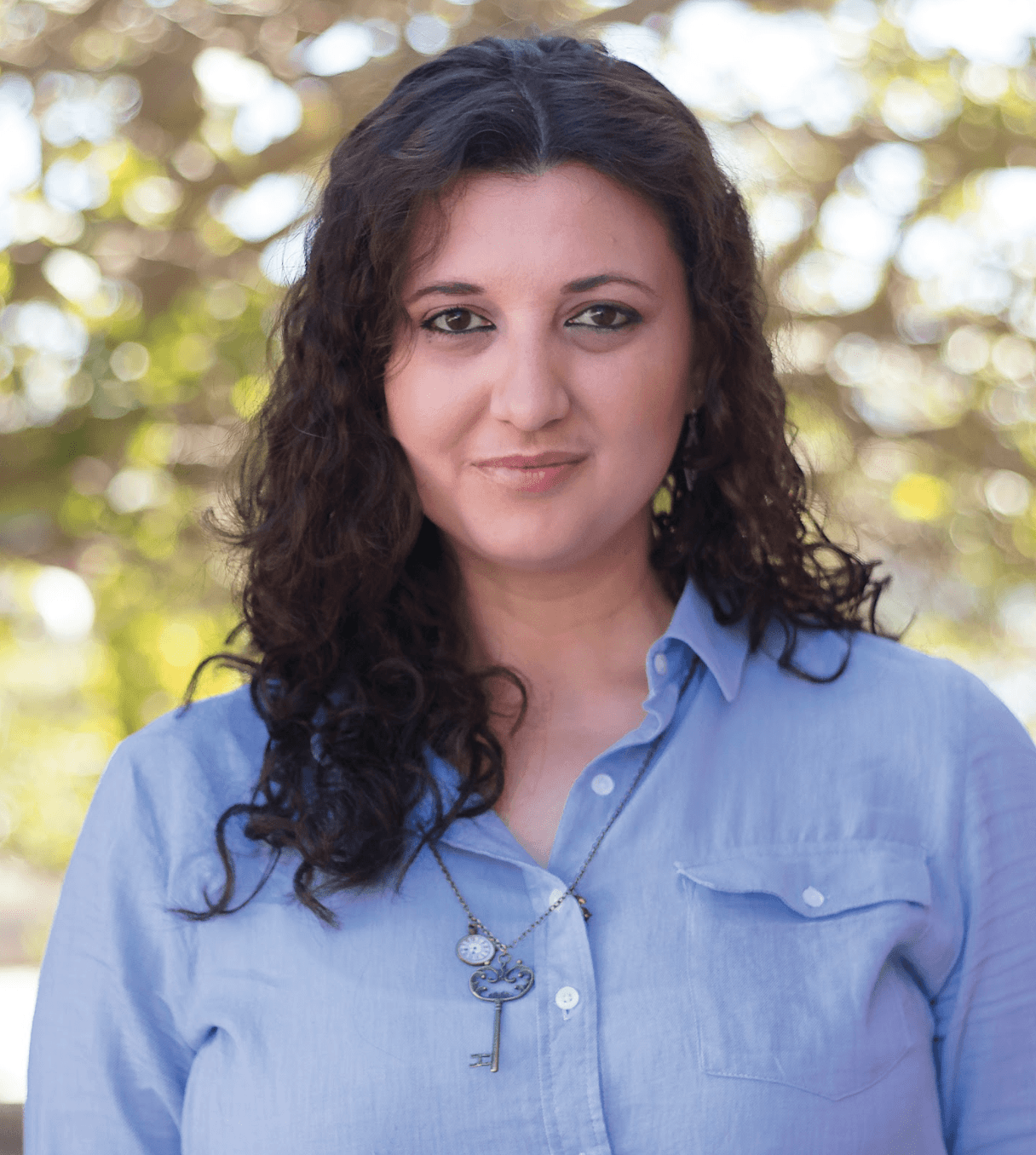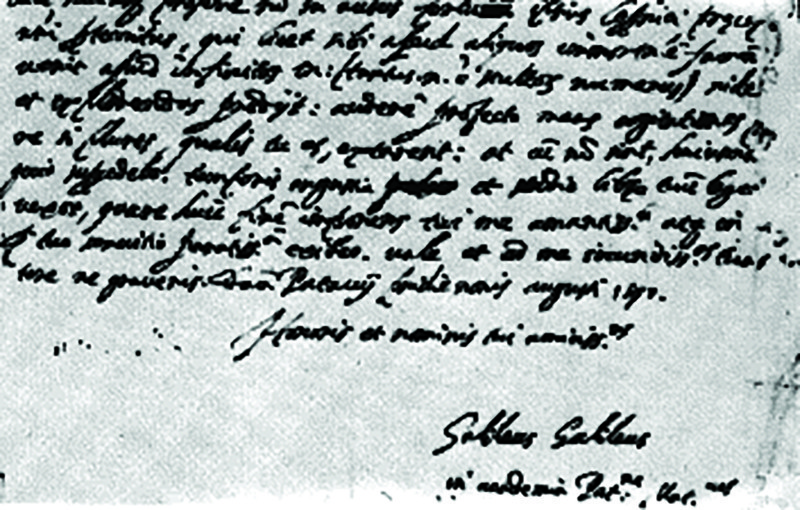Like a painting, society is created out of different, colourful brush strokes of social, legal, economic, political, and religious aspects. The work of notary Bernardo Maria Callus depicts the changes and developments, traditions and values, and aspirations of the Order of St John’s as well as Maltese individuals’ needs. The acts of notary Callus are important for the study of continuity, change, and interaction in mid-eighteenth century Hospitaller Malta.
Continue readingOur editor-in-chief’s favourite THINK stories of all time!
The festive season is a time for family, friendship, and remembrance. Over the last nine years, I’ve seen THINK magazine being born, grow up, and mature. First as its life giver, then as its pilot, my job has been to make sure the ship doesn’t stray too far off course while allowing the excellent editors Cassi Camilleri, Daiva Repečkaitė, and David Mizzi to bring their own flavours and thoughts to the magazine.
The journey has been long — full of hurdles and rewards. Some academics did not agree with the approach: ‘THINK turns researchers into superstars,’ blurted one researcher, making that seem like an awful thing. Other researchers couldn’t understand why we wanted to talk about their failures. Experiments don’t always work, and we wanted to show the passion researchers need in order to contribute to human knowledge through publications. Meanwhile, other people loved how much time we dedicated to design and how easy the magazine was to read, proud that the University of Malta could produce such a high quality publication on a shoe-string budget.
The year’s end has made me reflect on all the stories we have covered, from articles that affected every Maltese resident to research stories that rewrote Maltese history. It has been a great ride. Below are some of my favourites. I hope you enjoy reading them as much as I enjoyed working on them with the excellent THINK team.
Stories that bring to light vital issues
Research sometimes brings shocking things to light. Imagine If one-third of the world’s shipping traffic passed by your door, and every ship burnt heavy fuel oil equivalent to a medium-sized power station. Prof. Ray Ellul and his team discovered that these fumes were causing pollution peaks in Malta, which also has high levels of asthma and other respiratory diseases.
Writing about this story showed me how important it was that THINK’s dedicated team was trying to find out what research was happening in Malta. We were the first to write about this research. Our story was picked up by issuu.com, gaining over a million hits through their platform. The story hit a nerve both in Malta and abroad.
Malta’s pollution problem is partly due to shipping, but also stems from traffic: fossil-fuel burning vehicles are Malta’s largest contributor. To this day, neither has been addressed. Lung conditions are still rampant.
We followed up the story in 2017 and again in 2020.

Re-writing history
Other research shows how history tells many stories. History is not made up of one narrative but of many competing ones. The final story is written by the victor. Back in 1798, Malta was invaded by the French, but recent research by Dr Charles Xuereb adds nuance to the story Maltese children have been taught in school. The story was that the French were hated, stole all our silver, and treated the Maltese very badly. Xuereb found out that many Maltese people and the then-rulers, the Order of the Knights of St John (many of whom were French), had practically invited the French to Malta. Napoleon tried to bring his values of free education and health to Malta, but that didn’t last long as it upset the merchant class and church — two powerful forces that didn’t benefit from Napoleonic rule.
But this isn’t what surprised me the most from Xuereb’s research. Around 10,000 Maltese people died in the ensuing two-year siege by the Maltese people in rural Malta supported by the British, against those locked up in the Three Cities and the Valletta/Floriana area bolstered by the French. What’s shocking is that this event is not remembered in our history books or monuments. The British rulers who came after the French didn’t want the Maltese people to think they could overthrow a colonial power, so they emphasised the British help and reduced the role of Maltese residents in this bloody two-year war.
For more, do read MALTA | Stockholm Syndrome: or why we love the British. If you’d like to read about other rewrites of Maltese history, see 1565 – Was it that great?
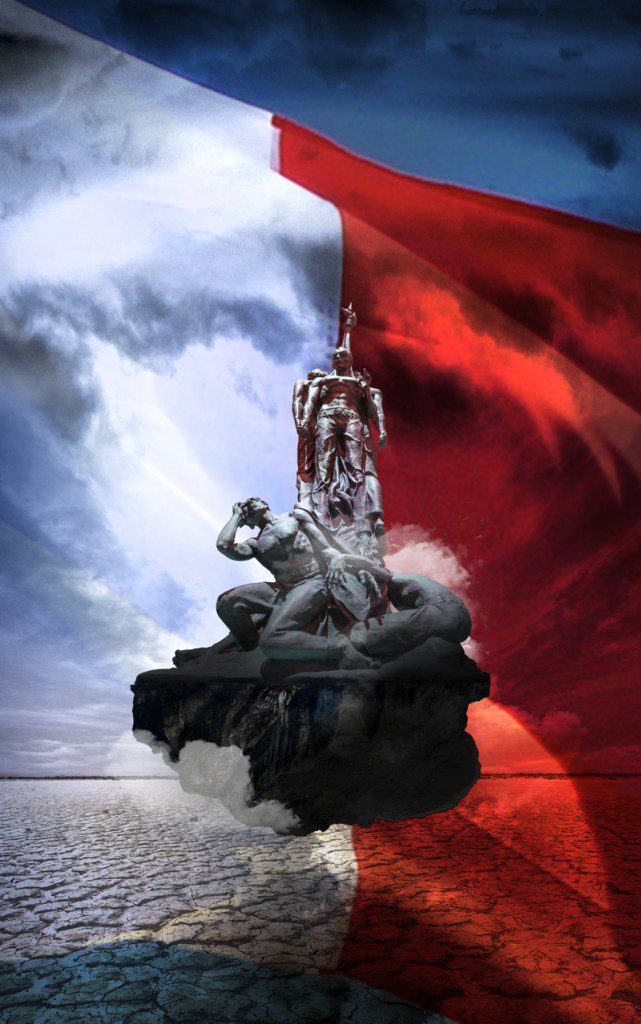
Stories that touch people’s hearts
Research changes lives. Dementia affects over 6,000 people in Malta. Cassi Camilleri wrote I’m sorry I forgot: Is dementia Malta’s next national crisis? Her story interwove Malta’s National Dementia Strategy publication with the sad story of Briton Geoffrey Morgan, who went missing and died because of his condition. His family opened up about their experience, showing just how important it is to invest in research on how to treat dementia, but also how to care for patients and their carers and families, who are normally overlooked.
A few years later dementia treatment in Malta received another boost: dance. The Step Up For Parkinson’s Voluntary Organisation started working with dementia patients and carers in Malta. THINK worked with them to produce Dancing with Parkinson’s: A short documentary and an article by Dawn Giles about the lives of people changed by this movement. Research by the organisation’s founder Nathalie Muschamp showed the impact the organisation’s work has on people’s lives. We recently followed up on this story in Caring for Carers, where we take a look at these unsung heroes.

Tackling the problem of gender
THINK hasn’t shied away from difficult issues. Our March 2020 issue focused on gender boundaries. THINK investigated how women are still held back in journalism, medical research, STEM careers, and even climate change. The issues are both Maltese and present the world over. I really loved how we celebrated the women who made it despite the glass ceilings. Read Making it in a male-dominated world to learn more about the three researchers we covered.
One article that is close to my heart is on the need to normalise the issue of gender. Rather than simply shrugging off the problem, the issue needs to be tackled head on. Dr Brenda Murphy spoke about Mainstream gender = mainstream funding. By focusing on gender and including more LGBTIQ+ community members in research, research quality will improve. I have spent tens of hours writing research grants to try and make this happen in Malta — the search goes on.
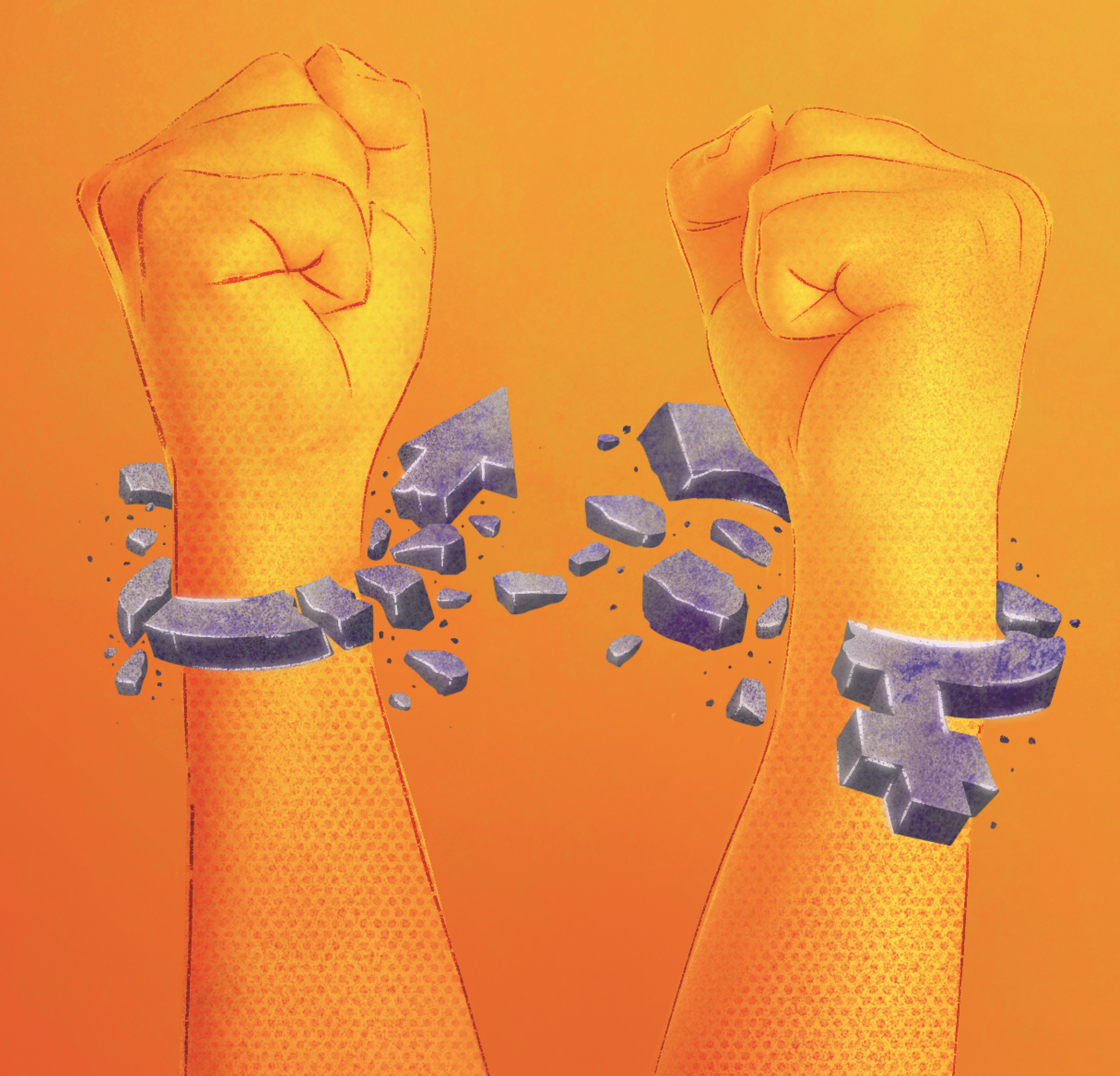
THINK has been an incredible life journey for me. Creating a magazine that speaks about Maltese research has been a dream come true. I had the idea while I was still living in Edinburgh, but the concept was a shared one, and many others pushed to start such a publication in Malta. That it is still going strong, with plans to make it even stronger under the helm of Editor David Mizzi, is the best Christmas present I could have received.
I want Maltese research to be known locally and worldwide. I want locals and politicians to talk to researchers and to make the best decisions for the country by balancing facts with public need. These wishes sound like pipe dreams, but let’s hope Santa is listening.
Safe haven?

Some refer to the Venice Biennale as the pinnacle of the international art world. Last year, feathers were flurried by the Maltese delegation and their representation of Maltese identity. This year, the works question a specific part of the Maltese narrative.
‘We are working around the theme of MALETH,’ says Dr Trevor Borg, artist, curator, and University of Malta lecturer. Maleth refers to the ancient word for Malta. ‘It is also called HAVEN and SAFE PORT.’ These were all terms used in reference to Malta over the centuries. But is our island really that? This is the question being tackled by Borg and his colleagues.
Immigration has been a critical issue in recent years, creating an inflammatory divide in Malta. Borg is using the first immigrants, the animals that travelled to Malta during the ice age, to make his point. ‘They travelled here because of the heat our island provided and the food that came with it. But as the ice in the North started to melt, sea level rose and they were unable to return.’
What is the relation between an (apparent) safe haven and a heterotopia? Here, heterotopia refers to Michel Foucault‘s notion of the ‘other place’. Heterotopias are described as ‘worlds within worlds’, connecting different places. They are places that constitute multiple layers of meaning, that accumulate time, that can be both real and unreal.
To represent this visually, Borg is going to create an archaeological find with hundreds of objects from history. Animal remains will feature, as will unusual artefacts and other strange finds. Borg was inspired by Ghar Dalam and used it as a starting point, but this work is not about history. ‘My work begins at the cave. But I will then leave the cave behind and delve into a distant world that never was! The work responds to fabricated histories, museological conventions, historical interpretations, and hypothetical authenticity. It is based on pseudo-archaeological objects and imaginary narratives,’ he explains.
Collaborating on this work, bringing the artefacts to life is Dr Ing. Emmanuel Francalanza (Faculty of Engineering). The process began at the National History museum in Mdina. ‘Together we selected and scanned a number of animal bones from their archives,’ Francalanza says. This included femurs, teeth, and skulls among others. ‘I then supported Trevor in reconstructing the 3D model and preparing it for printing.’
For Francalanza, this was a chance to apply engineering technologies in new ways, to allow artists to express themselves. But not just. ‘At the same time, this opportunity provides us engineers and scientists with an avenue to explore concepts and even utilise thinking patterns which are not traditionally associated with our disciplines. It helps us be more creative and open to innovative practices.’
Working together, Borg and Francalanza are blurring the lines between what is real and what is fake. By recreating the original artefacts in such a way that a viewer cannot determine whether what is being seen is authentic, the project is poignant commentary for the post-truth era we are living in.
Poverty in a prospering country
Author: Samuel Casha

In 2018, anti-poverty organization Oxfam reported how in 2017, the world’s 2,043 billionaires increased their combined wealth by $762 billion–enough money to eradicate global poverty seven times over. While in past centuries, poverty was a consequence of a lack of resources, abundance is a far greater issue in today’s world. The problem is resource distribution.
The gap between the rich and poor is ever-widening, and this is a reality that is true in Malta.
Our streets might not be blighted by homeless people as in most big European cities, yet hidden poverty is increasing. In 2016, the National Statistics Office reported that 16.5% of the Maltese population live at risk of poverty. Skyrocketing property prices have their part to play, grinding society’s most vulnerable members down. Currently, over 900 families live in garages, as stated in a parliamentary meeting in May 2018.
The situation is not the fault of any one political party or another. Poverty is a structural problem. Capitalism generates poverty, just as it generates wealth. Yet, too often, those in the middle-class point their fingers not at the rich and powerful fuelling the machine, but at the poor themselves. Many assume that the poor could climb the social ladder if only they worked harder, but many are employed and still fail to achieve a decent standard of living since the minimum wage is inadequate.
Throughout history, countless artists have depicted poverty, among them Vincent Van Gogh, whose Potato Eaters (1885) remains one of the most powerful paintings about poverty in history. Criticised for its lack of a ‘conventional sweetness,’ in a letter to his brother, Vincent insisted that ‘a painting of peasant life should not be perfumed.’ Van Gogh’s Potato Eaters brings the viewer face-to-face with a type of poverty that exists behind closed doors. Malta’s poverty problem is exactly that: behind closed doors. If we cannot do much to help them, at the very least, the poor deserve our empathy, not our judgement.
This article is based on research carried out as part of the B. A. (Hons.) History of Art with Fine Arts course within the Department of Art and Art History, University of Malta, under the supervision of Prof. Giuseppe Schembri Bonaci.
Conserving brushstrokes
A new conservation project will soon start work on one of Malta’s most significant historical artworks. Laura Bonnici meets Prof. JoAnn Cassar, Jennifer Porter, Dr Chiara Pasian, and Roberta De Angelis to find out why conserving the d’Aleccio Great Siege Wall Painting Cycle is of national importance.
Continue readingThe sky’s role in archaeology
In 1994, Czech poet-president Vaclav Havel wrote an article discussing the role of science in helping people understand the world around them. He also noted that in this advance of knowledge, however, something was left behind. ‘We may know immeasurably more about the universe than our ancestors did, and yet it increasingly seems they knew something more essential about it than we do, something that escapes us.’ Almost all traditional cultures looked to the sky for guidance. Cosmology is what gave our ancestors their fundamental sense of where they came from, who they were, and what their role in life was. While arguably incorrect, these ideas created codes of behaviour and bestowed a sense of identity. The cosmology of European prehistoric societies has been studied independently by archaeologists and archaeoastronomers (an interdisciplinary field between archaeology and astronomy). Despite their shared goal of shedding light on our past lives, thoughts, and ideas, the two fields have often failed to merge, mainly due to different approaches. A clear local case is the question of the Maltese megalithic temples.
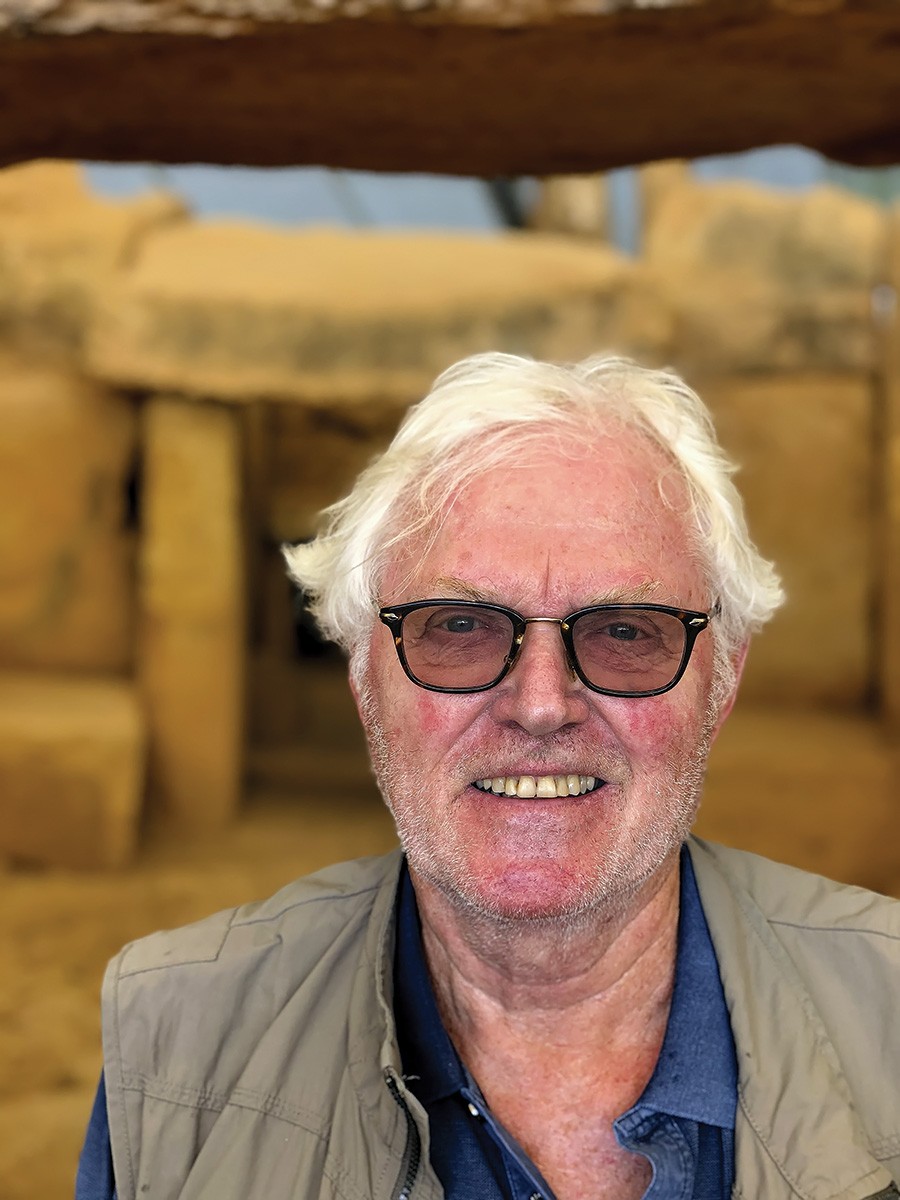
The Mnajdra South Temple on Malta predates both Stonehenge and the Egyptian pyramids. It is the oldest known site in the world that qualifies as a Neolithic device constructed to cover the path of the rising of the sun throughout a whole year. What is unfortunate is that, so far, archaeologists and archaeoastronomers have studied the site largely in isolation.
Whether the temples were built to visualise the effects of the rising sun as seen today is an open question. But with such specific and repetitive patterning, one cannot deny that the sky was an important element in the builders’ understanding of the world—their cosmology.
With some exceptions, archaeologists have largely ignored, excluded, or underrated the importance of the sky in the cultural interpretation of the material record. When studying ancient communities, chronological dating and economic concerns are often given precedence over the immaterial.
But the fault does not lie solely with disinterested archaeologists. Archaeoastronomy has often been too concerned with collecting astronomical and orientation data, neglecting the wider archaeological record, and ignoring the human element in cosmology.
We need to find a common ground. Both sides need to open themselves up to different professional perspectives and convictions and embrace alternative interpretations and possibilities. Bridging the gap between archaeology and archaeoastronomy will allow us to paint a detailed picture of past societies. And maybe it will shed light on that lost knowledge about the universe and our place in it.
Lomsdalen and Prof. Nicholas Vella are organising an afternoon workshop on Skyscape Archaeology as well as an open symposium on Cosmology in Archaeology. For more information, visit: um.edu.mt/arts/ classics-archaeo/newsandevents
Author: Tore Lomsdalen
Insurance industry roots
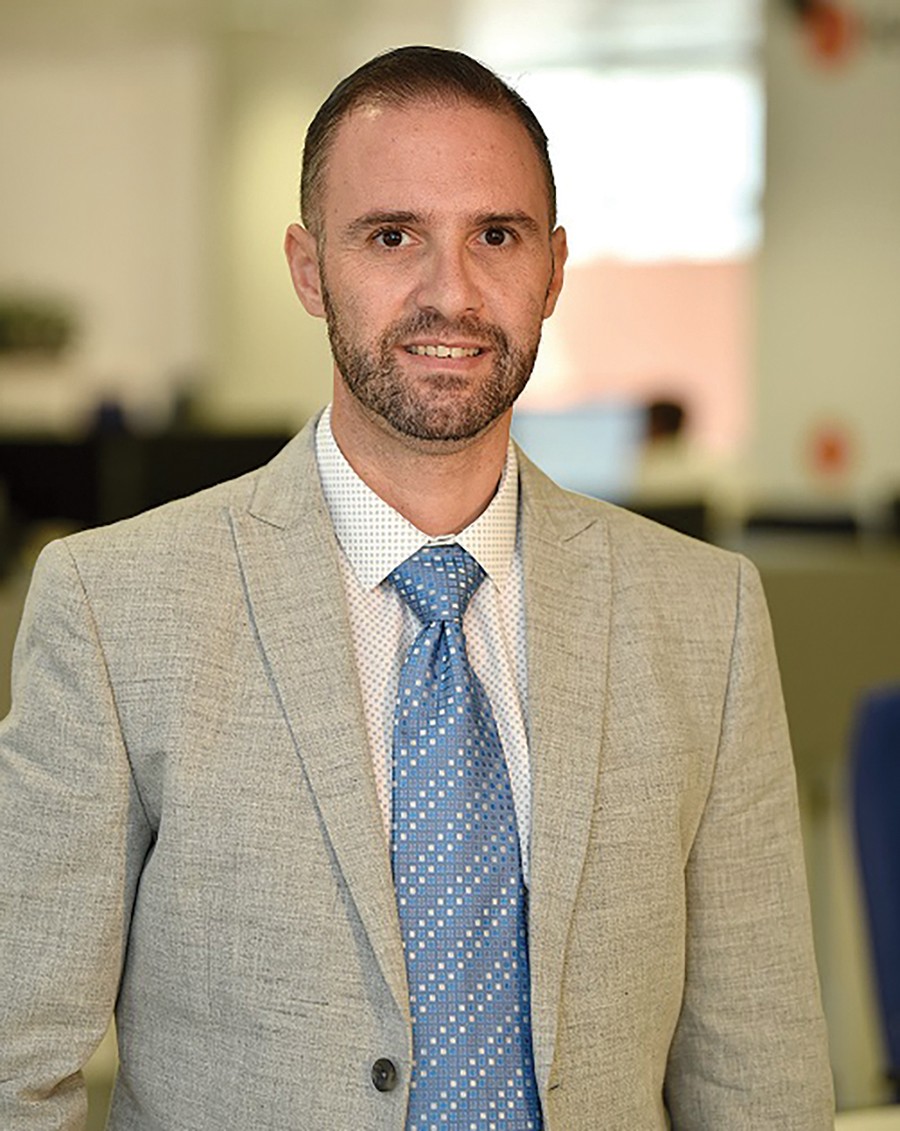
Everybody wants peace of mind. From the moment we lock the front door before going to work, to the second the car’s ignition turns off when we get back. Insurance makes that possible.
Insurance is one of the largest sectors of the Maltese financial services industry and a major pillar of its economy. Despite this importance, there is a research gap. Most historical records I referenced when looking into the history of insurance in Malta hinge on maritime history and historical accounts of bustling ports and the activity surrounding them.
My research aim was to initiate the first project actively chronicling the key contributors and events in Malta’s insurance industry. I started with methods used by the earliest inhabitants of the island, tracing its roots in maritime trade, followed by the emergence of more complex and sophisticated insurance services and products.
Reference to insurance in Malta can be traced back as early as 750 BCE, the time of the Phoenicians. The earliest known insurance contract I found was dated to 1524, around 12 years before the oldest contracts known prior to this study. Intra and extra-territorial socio-political, economic, and regulatory events have strongly contributed to the development of insurance and have forged it into the industry it is today.
Through a series of semi-structured interviews, backed up by findings from empirical literature and archival research, I made some key discoveries. For example, after the Knights of St. John settled in Malta, Maltese farmers fearing a Turkish invasion sought security (insurance) from their landlords through contracts. I also found that in the 1980s, a very specific insurance existed for racing horses. These valuable insights are being published by Emerald publishing (London).
Understanding the past’s lessons is the best way to prepare for the future.
This research was carried out as part of an M.A. in Insurance and Risk Management, Department of Insurance, Faculty of Economics, Management and Accountancy, University of Malta.
Author: Mark Lawrence Zammit
The Philosophy of Creativity
In this age of specialisation, finding a niche is key to most people’s career progression. But it is not the only way. Cassi Camilleri sits down with philosopher poet Prof. Joe Friggieri to gain insight into his creative process.
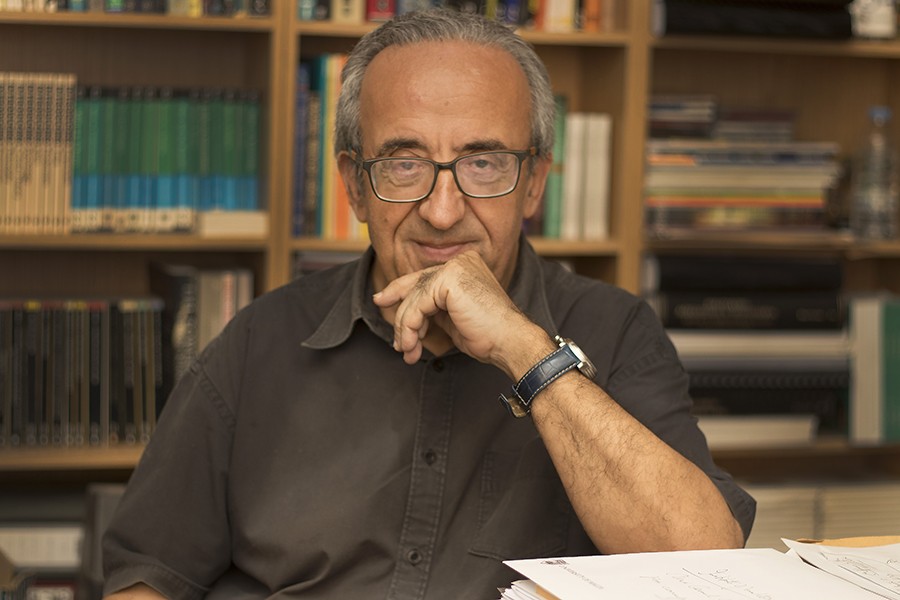
It was a very warm April day when I found myself sitting in front of Prof. Joe Friggieri. My heart was racing—I had just run up three flights of stairs for a rescheduled meeting after having missed our first earlier in the day. I had lost track of time while distributing magazines around campus. My eyes briefly scanned his library, wishing it was mine, then got right down to the business of asking questions.
Friggieri balances between two worlds: the academic and the creative. His series Nisġa tal-Ħsieb, the first history of philosophy in Maltese, is compulsory reading for philosophy students around the island. His collections of poetry and short stories have seen him win the National Literary Prize three times. I ask Friggieri if he separates his worlds in some way. ‘I can’t stop being a philosopher when I’m writing a short story or play. Readers and critics of my work have pointed that out in their reactions,’ he says. ‘I do not necessarily set out to make a philosophical point in my output as a poet, short-story writer, or playwright, but that kind of work can still raise philosophical issues.’
‘Dealing with matters of great human interest—such as love or the lack of it, happiness, joy and sorrow, the fragility of human relations, otherness, and so on—in a language that is markedly different from the one used in the philosophical analysis of such topics can still contribute to that analysis by creating or imagining situations that are close to the experiences of real human beings,’ Friggieri illustrates.
The urge to write
In reality, Friggieri is usually inspired by day-to-day moments, things normally overlooked in today’s loud and busy world. ‘In my literary works, I am inspired by what I see, hear, and feel; by people and events, by what I read about and by what I can remember,’ he says. It could be anything from a news item to a painting, a whiff of cigarette smoke, a piece of music, or a word overheard at a party. ‘All of that can trigger off an idea. Then, when I’m alone, I seek to elaborate the thought and to convey it to others by means of an image or series of images in a poem, or as part of the plot in a short story or play.’
While on the subject of inspiration and starting points, I wondered: how does Friggieri work? First, he swiftly explains his aversion to using computers for his writing. ‘I do all my writing the old-fashioned way,’ he notes. ‘I use pen and paper. I find it much easier to write that way than on my computer. It feels like my thoughts are taking shape literally as I push my pen from left to right across the page. I think with my pen, much in the same way that a concert pianist thinks with her fingers and a painter with her brush. It’s that kind of feeling that makes me want to go on writing.’ At this point, the subject of the Muse comes up. Is this something Friggieri believes in? ‘Waiting for the Muse to inspire you is just a poetic way of saying you need to have something to write about and you’re looking to find the right way of expressing it,’ Friggieri explains. ‘I write when I feel the urge or the need to write,’ he tells me with a smile.

The sheer volume of work Friggieri has built up over the years seems to imply that he writes daily. But in reality, his workflow is more akin to sprints than a marathon. He tells me deadlines are a good motivator for him to write, providing a tangible goal he can work towards. ‘My first two collections of short stories were commissioned as weekly contributions to local newspapers,’ Friggieri says. ‘That’s how ‘Ir-Ronnie’ was born.’ Ir-Ronnie is a man who finds himself overwhelmed by life’s pressures: family, work and everything in between. As he starts to lose touch with reality, ‘ordinary, everyday living becomes an ordeal for him, an obstacle race, a struggle for survival,’ says Friggieri. More recent works, such as his latest collections of short stories—Nismagħhom jgħidu and Il-Gżira l-Bajda u Stejjer oħra—also reflect this realism, exploring the complexity of interpersonal relations between different people from different walks of life. On the other hand, Ħrejjef għal Żmienna (Tales for Our Times) finds its roots in magical realism, which makes these stories a very different experience for his readers. The books have been well received, with translations into English, French, and German. Paul Xuereb, who worked on the English translation, described the tales as ‘drawing on the dream-world and waking reveries to suggest the ambiguity and often vaguely perceived reality of our lives.’
The Creative Philosopher
When it comes to talking about his other works and creativity, Friggieri often refers to language. When I asked him about his thoughts on creativity and whether he believed everyone to be ‘creative’, his response was positive. ‘As human beings, we are all, up to a point and in some way, creative,’ he says. A prime example is humanity’s use of language. ‘Think of the way we use language. Dictionaries normally tell you how many words they contain, but there’s no way you can count the number of sentences you can produce with those words. Language enables us to be creative in that sense, because we can use it whichever way we like, to communicate our thoughts and express our feelings freely, without being bound by any definite set of rules. In a very real sense, every individual uses language creatively, in a way that is very much his or her own. I think the best way to understand what creativity is all about is to start from this very simple fact.’
Language enables us to be creative in that sense, because we can use it whichever way we like, to communicate our thoughts and express our feelings freely, without being bound by any definite set of rules.
Is Friggieri creative when he writes his philosophical papers? ‘Yes,’ he nods. ‘Each kind of writing has its own characteristic features. But creativity is involved in all of them.’ With philosophy, ‘you need more time,’ he notes. ‘You need to know what others have said about the subject, so it involves researching the topic before you get down to saying what you think about it. When it comes to writing a poem or play, you’re much freer to say what you like, much less constrained.’
In fact, Friggieri has five plays under his belt. Here is where the two worlds of academia and creative writing merge. ‘In three of my five full-length plays, I make use of historical characters (Michelangelo, Caravaggio, Socrates) to highlight a number of issues in ethics and aesthetics that are still very much alive today,’ says Friggieri. Taking L-Għanja taċ-Ċinju (Swansong) as an example, Friggieri explains how ‘Socrates defends himself against his accusers by raising the same kind of moral issues one finds in Plato’s Apology. The Michelangelo and Caravaggio plays, on the other hand, highlight important questions in aesthetics, such as the value of art, the relation between art and society, the presence of the artist in the work, the difference between good and bad art, and the mark of genius.’
Talking of theatre, Friggieri remembers how, before writing his first play, he had directed several performances. This was where he learnt the trade and what it meant to have a good production. ‘I have also had the good fortune of working with a group of dedicated actors from whom I learnt a lot. In my view, one should spend some time working in theatre before starting to write for it.’
As time was pressing, and the sun was starting to move away from its opportune place in the window, I asked Friggieri one last question, the one I had been obviously itching to ask. What advice does he have for writers? The answer I got was one I should have expected. ‘Budding writers should write. Then they should show their work to established practitioners in the field. The first attempts are always awkward. As time goes by, one learns to be less explicit and more controlled, to use images to express one’s thoughts where poetry is concerned, to develop an ear for dialogue if one is writing a play, to produce well-rounded characters in a novel, construct interesting plots, and so on. All this takes time, but it will be worth the effort in the end.’ And with that, we had the perfect closing.
Author: Cassi Camilleri
Classical Hebrew undying
Classical Hebrew is the Hebrew of the Tanakh, the Jewish Scriptures, the very source of the Christian Old Testament. Its first appearance in the historical record dates back to the 10th century BCE, and like the other semitic languages from which it emerged, it was written from right to left and comprises only consonants. By the turn of the Common or Current Era, its use as a spoken language was quickly being superseded by Aramaic and Greek. A few centuries later it was a linguistic relic, its use limited to liturgical and literary contexts, not so different from the use of Latin much later in the Christian west.
‘Dead’ languages bring up the question of relevance. They are limited in their vocabulary, especially when compared to their contemporaries; the Classical Hebrew lexicon amounts to just about 10,000 words. Today, they could not be used for communication, on official documents, or for most conventional things. However, there is one function ancient languages fulfill in a far superior manner—interpreting ancient texts.
Modern translations cannot quite capture the nuance of ancient texts. Translators can only convey ideas after making countless choices in the understanding and rendering of words, all while being consciously or unconsciously guided by their own ideological leanings. Translations are essentially interpretative exercises. Armed with knowledge of the original language, a reader can identify the original authors’ ideology, emphasis, word order, and tone. All of these features could easily be lost in translation. For example, should the word ‘meshihu’ in Psalm 2:2 be translated as ‘his Messiah’ or ‘his Christ’ or ‘his Anointed One’? A choice needs to be made, and that choice does make a difference.
Archaeologists use the same concept when studying ancient artefacts, as do epigraphists, the specialists who study inscriptions. Understanding the inscribed language on items leads to a clearer, more colourful picture of its context and origins. The Malta Government Scholarship Scheme supported me in carrying out such an epigraphic study for my doctoral research at the University of Oxford. My project dealt specifically with a group of inscribed pottery sherds discovered at Lachish (modern Tell ed-Duweir) in Israel. Combined with an archaeological and contextual reassessment, these inscriptions provided valuable insight into the socio-political history of early 6th-century BCE Judah, including scribal culture and the mastery of the contemporary Hebrew language, as well as military operations and prophetic activity, all of which strike similarities with the Book of Jeremiah.
Studying Classical Hebrew can be a rigorous mental workout that instills an appreciation for detail: an insight useful across innumerable fields. Not only does it provide a solid foundation for Modern Hebrew, but it offers a fresh perspective for those wishing to read biblical texts in a critical manner. After all, the Bible remains an iconic cultural artefact in the western world, vital when discussing not only ideology but even cinema, literature, music, and art.
Ancient languages give a voice to our history and the people who shaped it, all the while providing food for thought for those in the present.
For more information: The Department of Oriental Studies (Faculty of Arts, University of Malta) offers study-units on Classical Hebrew grammar, syntax, and readings at undergraduate level.

